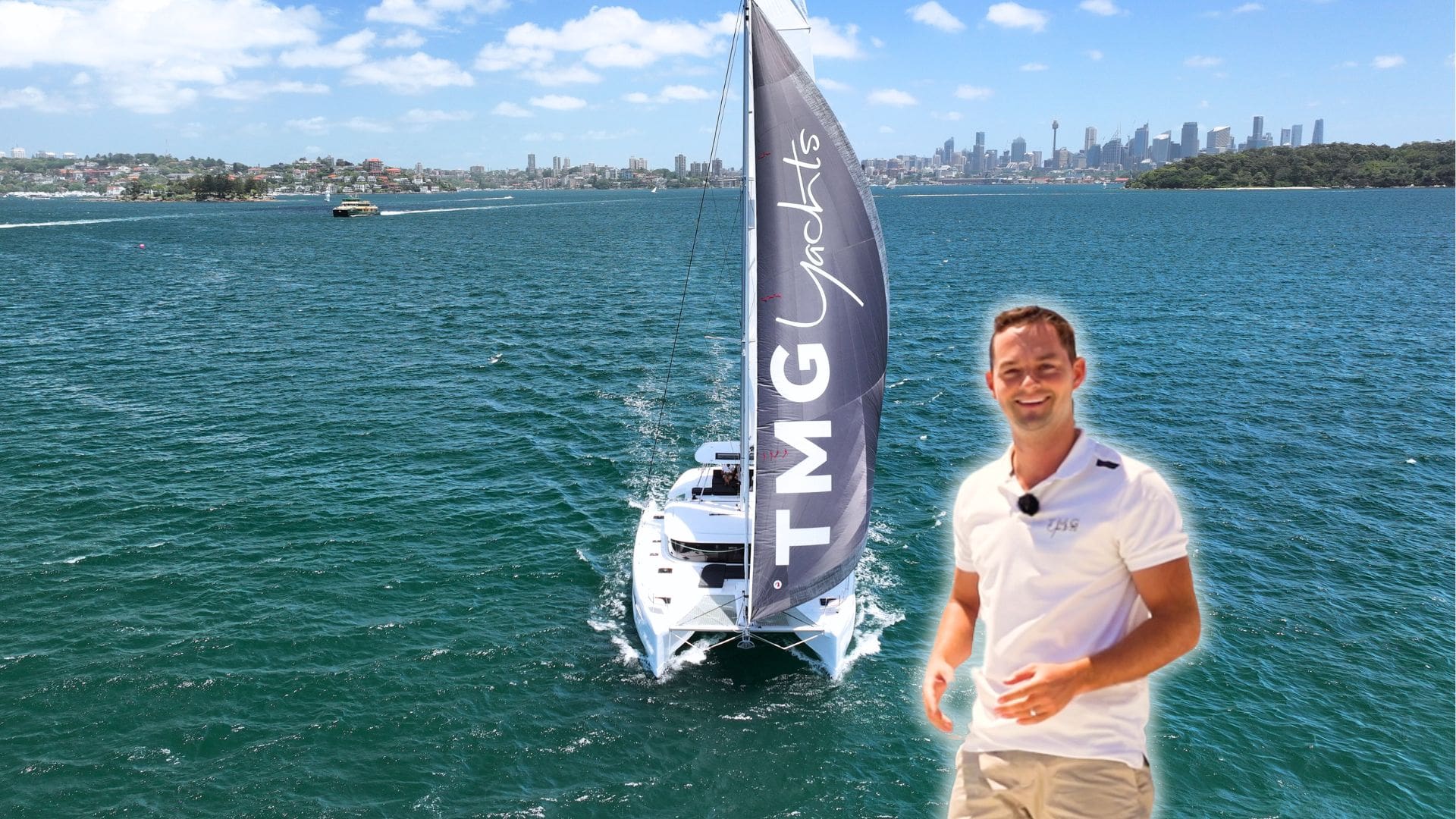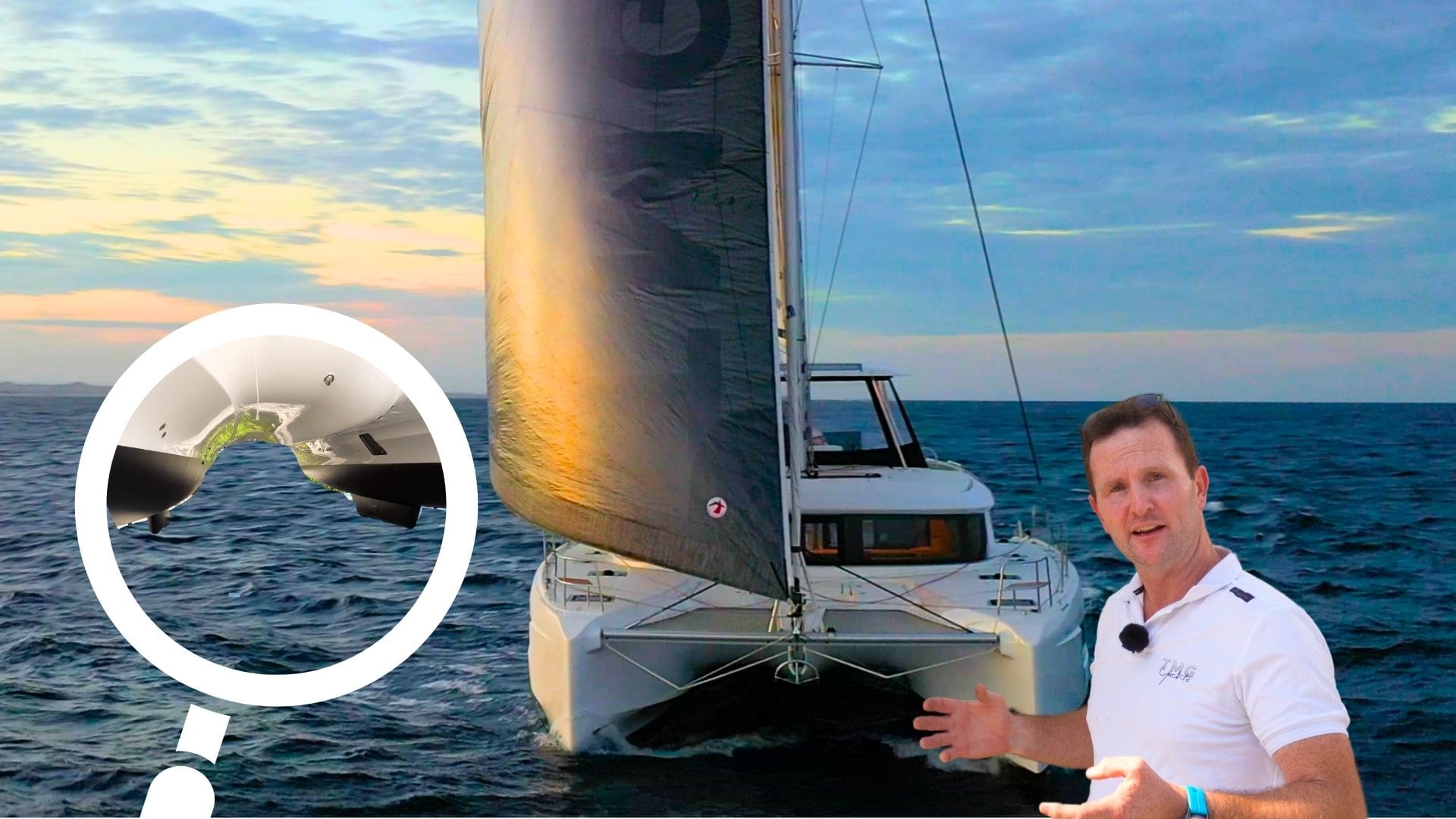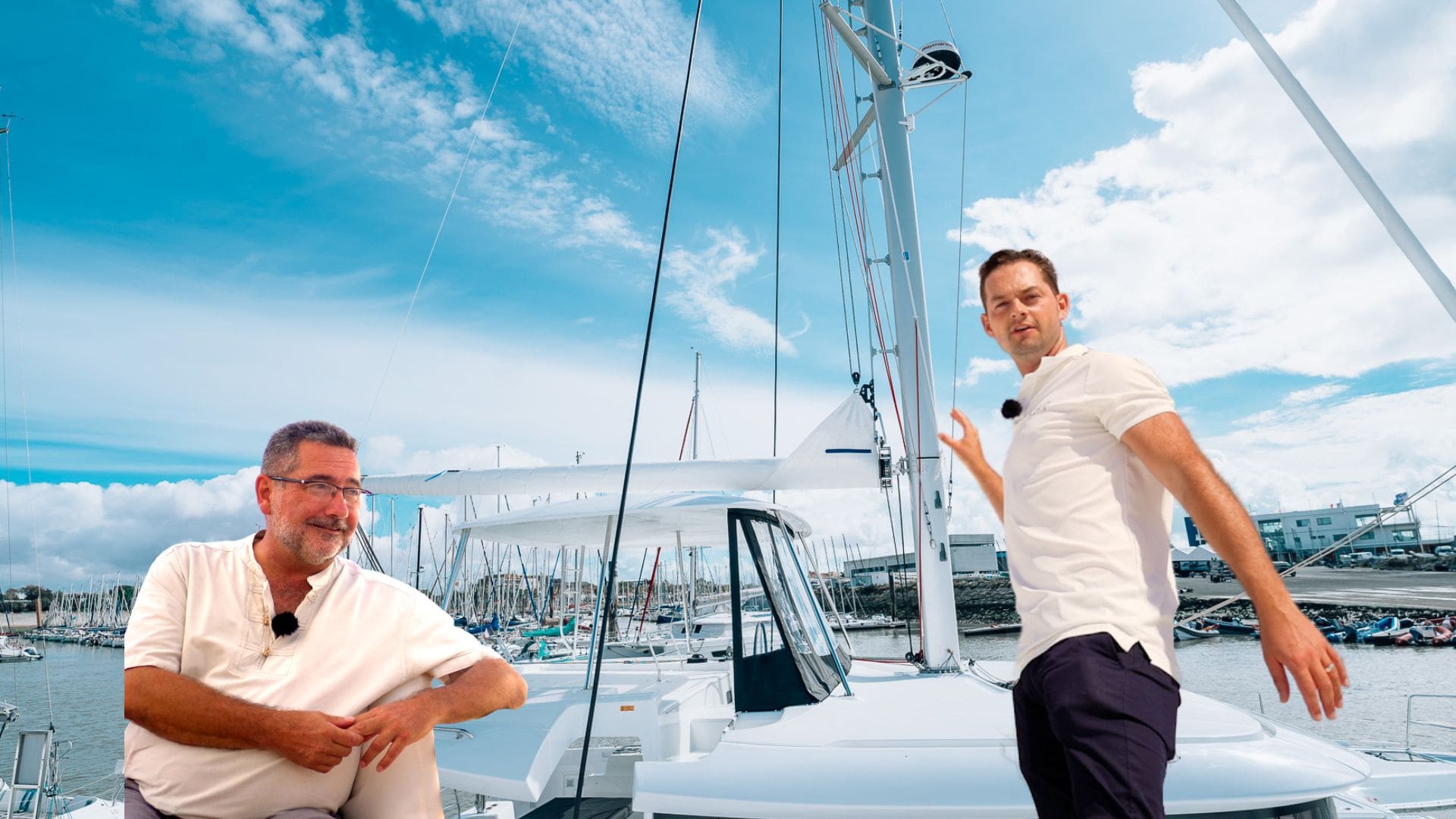How to Trim Downwind – Basic Sailing Techniques
Inspire & Learn – Back to Basics
In this episode, we will delve into the art of sail trimming when sailing downwind. Whether you’re a seasoned sailor or just beginning to explore the boating world, understanding the nuances of sail trim can significantly enhance your boat handling abilities. Join our expert team as we provide insights, tips, and techniques to help you optimise your downwind sailing experience. This demonstration was done on a Lagoon 42 but can be replicated on other model vessels.




TELLTALES
Learning how to trim your sail is a crucial skill for any sailor. Luckily, there are some useful instruments that can help make the task a bit easier. These instruments, called telltails, are ribbons attached to the sail that indicate airflow over the front and back sides. Ideally, you want the telltails to be in a linear motion, indicating a smooth airflow around both sides of the sail. If they are not, it means the sail is inefficient and needs to be adjusted.
JIB/ GENOA
When sailing downwind, the goal is to maximize the sail’s efficiency by allowing it to catch the wind while avoiding excessive flapping or luffing. Here’s how you can achieve the optimal trim:
- Assess the wind angle: Determine the angle at which the wind is coming from behind you. This will influence the sail trim adjustments you need to make.
- Reading the telltales: While downwind, the telltales might struggle to fly due to lower wind speeds. Instead, focus on observing their behavior. If the telltales on the back edge of the sail flutter or deviate from a linear horizontal position, the sail needs to be eased out. Conversely, if the telltales on the inside flutter or exhibit disturbed airflow, the sail should be pulled in.
- Avoid excessive flapping: Without the use of the telltales you can ease out the sail until you reach a point where it starts flapping, then pull it in until the point at which it stops flapping. This indicates an appropriately set jib or Genoa for downwind sailing.



MAINSAIL
The mainsail plays a crucial role in powering your boat downwind. To optimise its performance, follow these steps:
- Positioning the boom: Move the boom away from the centreline of the boat. This perpendicular angle to the wind enhances the sail’s coverage and propulsion. This precaution is particularly important for safe downwind sailing to minimize the chances of an accidental jibe.
- Adjusting the main sheet and traveller: Rather than solely easing off the main sheet, tighten it to prevent the top of the sail from billowing out excessively. Simultaneously, ease the traveller down the coach roof. This allows you to move the mainsail out without it rubbing against the standing rigging.
- Wind strength considerations: In stronger winds, tighten the main sheet slightly to capture more wind and increase speed. Conversely, in lighter winds, a slightly looser main sheet can create an opening in the sail to facilitate airflow.
Additional Tips and Precautions:
- Adding a preventer: For longer offshore passages or when sailing in unsettled conditions, consider using a preventer. This line attaches to the boom and secures it to a cleat or fixing point on the leeward side of the boat. It helps maintain boom position and reduces flogging during swells.

LATEST FROM THE INSPIRE AND LEARN SERIES
How to Fly a Code Zero on a Catamaran
In this guide, we delve into the intricacies of flying a Code Zero on a catamaran, specifically the Lagoon 46. Join our expert, Joe Fox, as he walks you through the setup, preparation, and manoeuvres involved in harnessing the power of this versatile sail.
Guide to Hull Maintenance & A Detailed Look Below the Surface
In this instructional piece, we delve beneath the waves to explore the underwater profile of the a Lagoon Catamaran. Join us as we dissect the key features and maintenance points of the Lagoon 46, offering insights into what to look for during routine upkeep.
Lagoon Catamarans’ NEW Furling Boom System – Inspire & Learn Technical Feature
We’re excited to introduce you to a groundbreaking development in the world of catamarans – Lagoon Catamarans’ new Furling Boom System. This video and blog will delve into the details of this exciting development, featuring an interview with the mastermind behind the project, Bruno Belmont, Lagoon Catamarans’ multihull expert, as well as an exclusive first look with Joe Fox from TMG.



